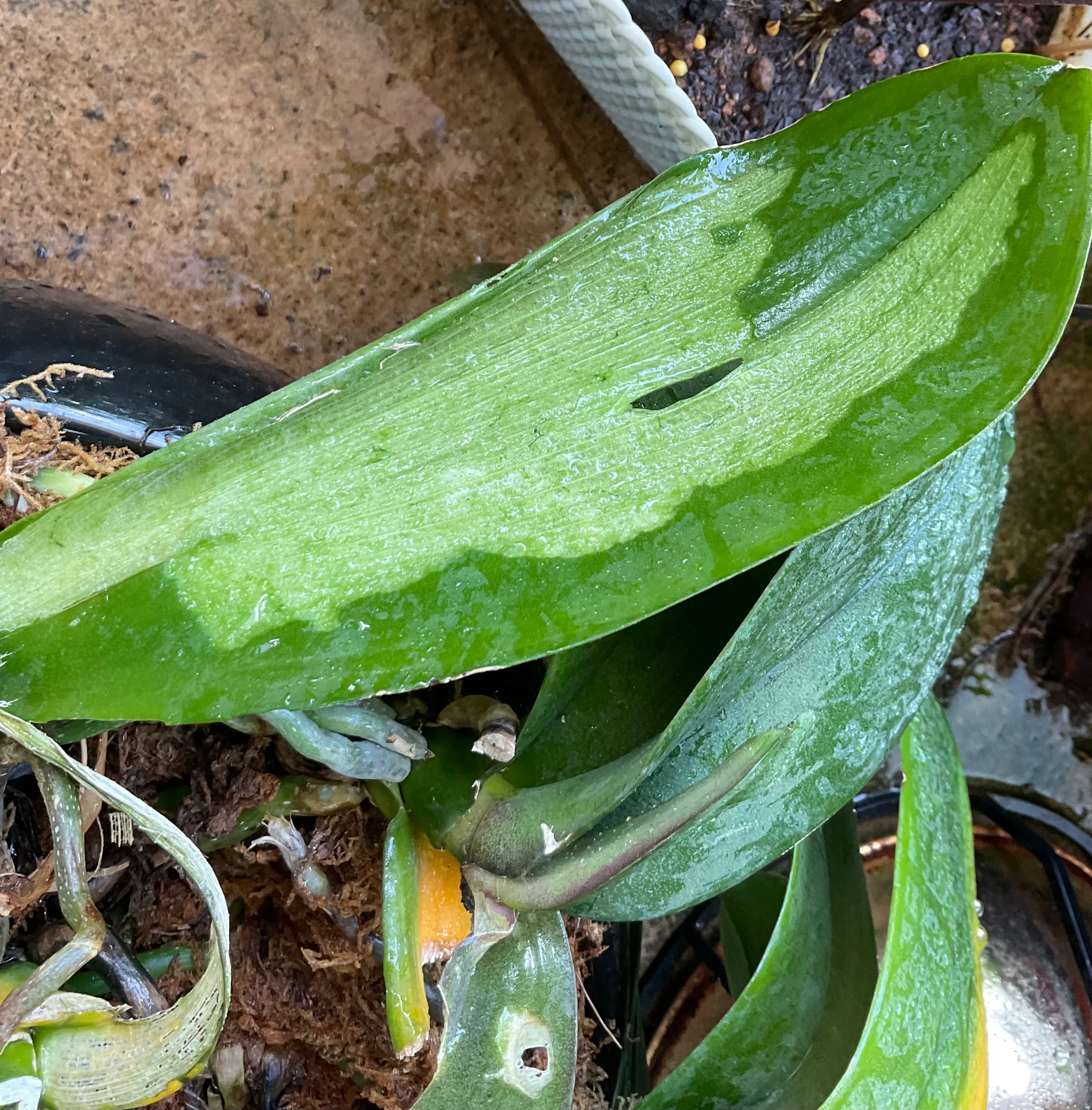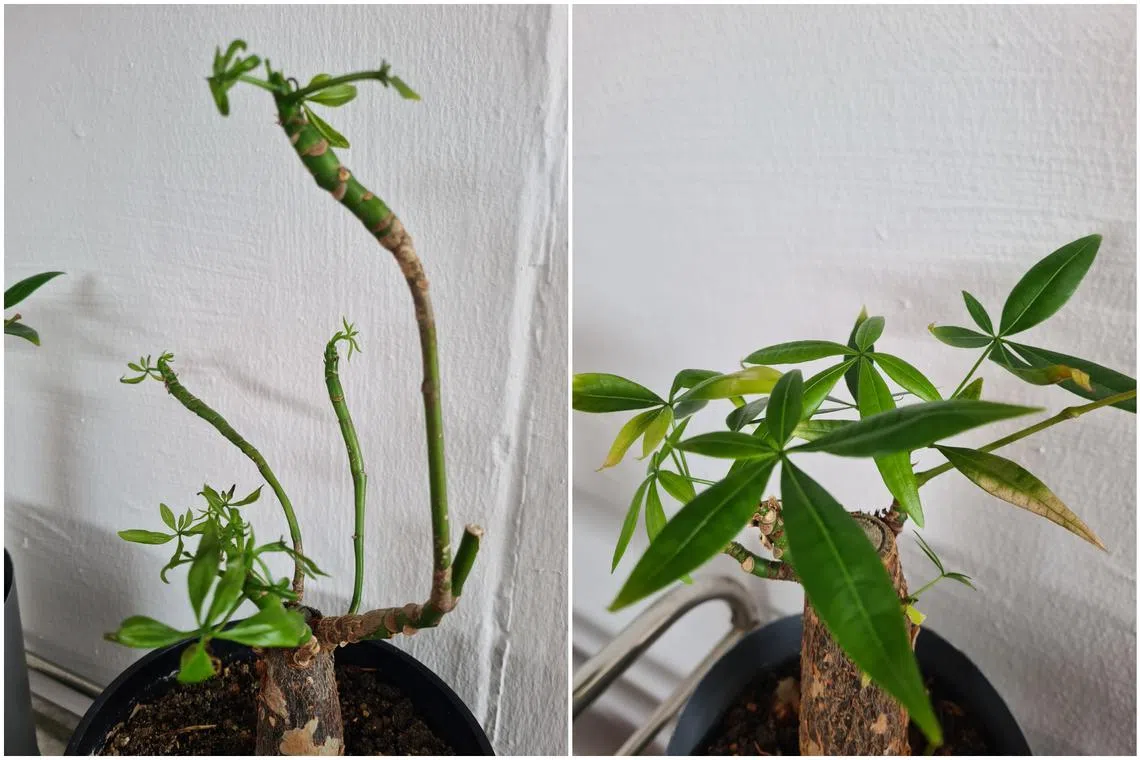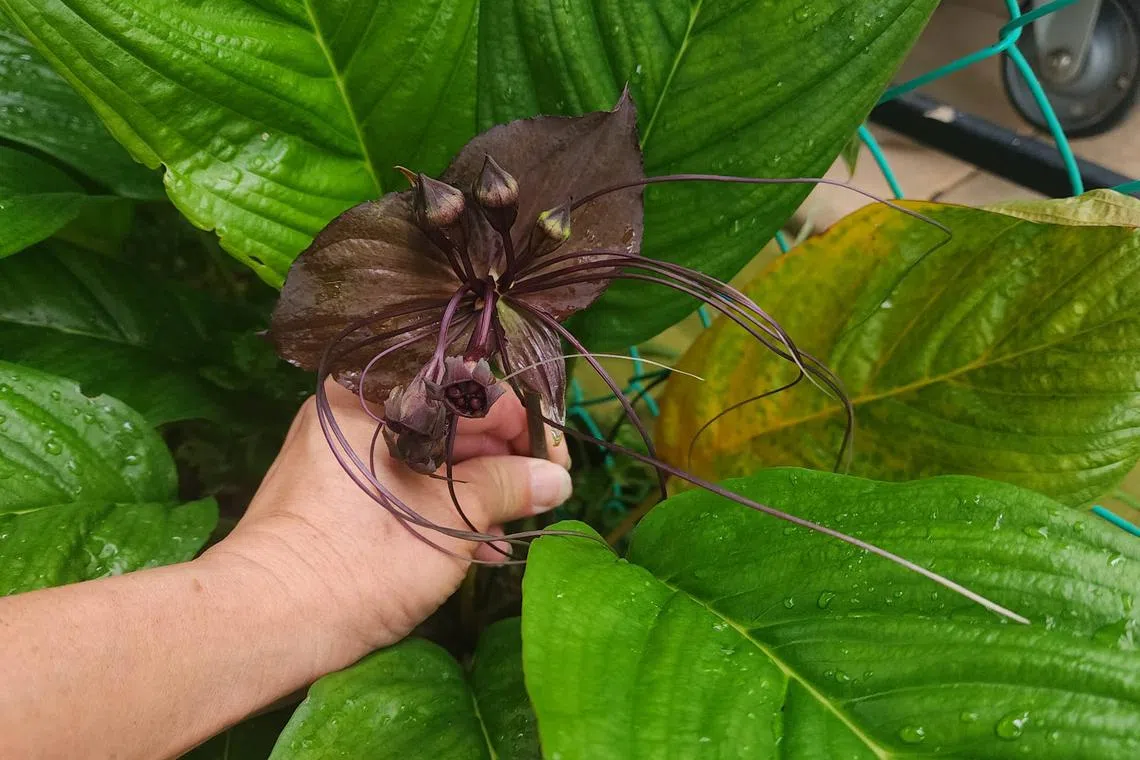Root Awakening: Pencil Cactus flowers are easily missed
Sign up now: Get ST's newsletters delivered to your inbox

Grow the Pencil Cactus in direct sunlight and well-draining soil for best results.
PHOTO: TEOH AI BEE
Wilson Wong
Follow topic:
Pencil Cactus produces small yellow flowers
Does this plant flower? If so, what do the flowers look like?
Teoh Ai Bee
The Pencil Cactus (botanical name: Euphorbia tirucalli) is not a true cactus and produces tight clusters of yellow flowers at the tips of its stems. These are small and easily missed.
Note that this plant is relatively drought-tolerant and should be grown under direct sunlight and in well-draining soil for best results. Avoid contact with its milky sap as it is toxic and can cause blindness.
Desert Rose needs sunlight and nutrients

This Desert Rose plant likely does not have enough nutrients for healthy growth.
PHOTO: WENDY NEO
I water my plant only when the soil is dry, sometimes with garlic water or banana-peel water. Some of its leaves have turned yellow. Should I repot it?
Wendy Neo
Your Desert Rose plant looks elongated, which is an indication that it may need more sunlight. It is a sun-loving plant, which prefers to be grown in a location with at least six hours of direct sunlight daily.
Your plant likely does not have enough nutrients for healthy growth. Buy slow-release fertilisers from a local nursery to meet your plant’s nutritional needs. Examine the fertilisers’ labels to ensure they provide the full suite of nutrients.
Orchid plant damaged by snails

The surface tissue of this Moth Orchid looks to have been eaten by snails or slugs that scrape and feed on the leaf tissue.
PHOTO: THEN SUKE MIN
This Phalaenopsis orchid is on a north-facing balcony in a residential tower. Does it have a viral or fungal infection?
Then Suke Min
The surface tissue of your Moth Orchid (a Phalaenopsis hybrid) looks to have been eaten by snails or slugs that feed by scraping off the leaf tissue.
During the day, these pests may hide in dark, moist areas in the vicinity – or within the substrate of your orchids – and come out to feed only at night. Check the area thoroughly, remove potential hiding spaces and discard any snail or slug that you find.
Guiana Chestnut needs sunlight

One of the Guiana Chestnut plants has thin, curly leaves (left), while the other has leaves of a decent size, but which turn brown and fall after some time.
PHOTOS: CHAN TZE HUA
My two plants have different issues. One of them grows very slowly, with thin and curly leaves. The other has decently sized leaves that turn brown and fall after a while. I keep them under shade and mist them every other day. How can I save them?
Chan Tze Hua
Your plants are the Guiana Chestnut (botanical name: Pachira aquatica), a popular houseplant. They are both commonly marketed as a “lucky plant” for Chinese New Year.
This species is a sun-loving one, so your plants’ growth issues could be due to the lack of light, which leads to the production of soft tissues that are prone to pest attacks. Move your plant to a location that gets at least six hours of direct sunlight daily.
Propagate Bat Flower via division

The Bat Flower may be self-pollinating, or pollinated by midges.
PHOTO: ADRIAN LING
Our Bat Flower bloomed recently, but seems unable to reach maturity. Is this normal? Is the fruit edible and how do I propagate the plant?
Adrian Ling
The Bat Flower (botanical name: Tacca chantrieri) produces edible fruit, but these have not been reported to be consumed by humans and there is limited information available on the subject.
Mature, open flowers can be seen at the lower left side of your plant’s inflorescence. Studies show that the Bat Flower may be self-pollinating, or pollinated by midges. Its fruit is oval and purplish brown, with ribs on the side.
This plant is propagated via division – that is, by taking offsets that grow on the side of the mother plant and potting them separately.
Answers by Dr Wilson Wong, an NParks-certified practising horticulturist and parks manager. He is the founder of Green Culture Singapore and an adjunct assistant professor (Food Science & Technology) at the National University of Singapore.
Have a gardening query? E-mail it with clear, high-resolution pictures of at least 1MB, if any, and your full name to . We reserve the right to edit and reject questions.

